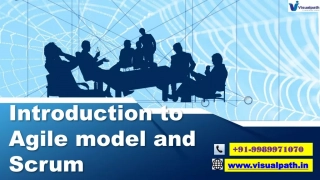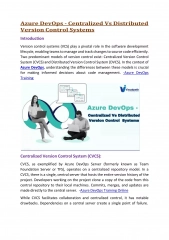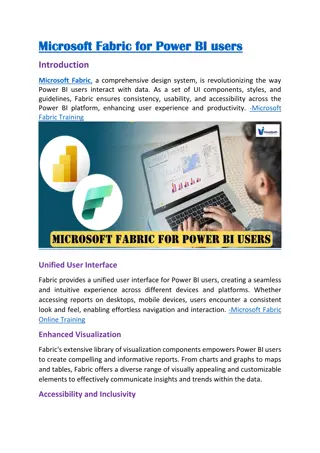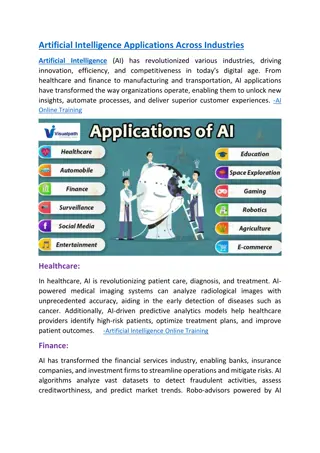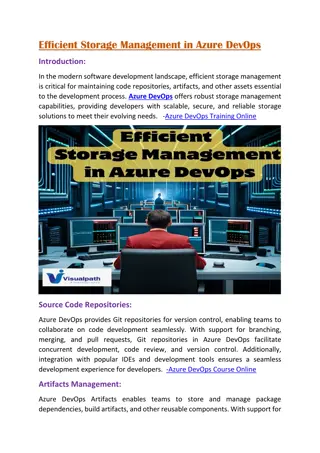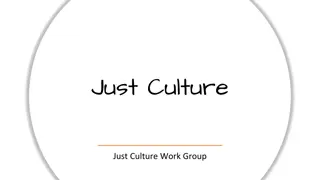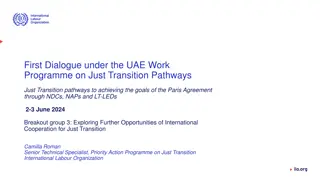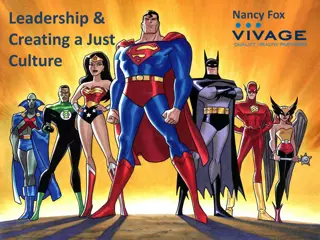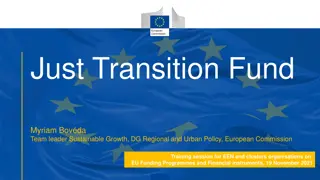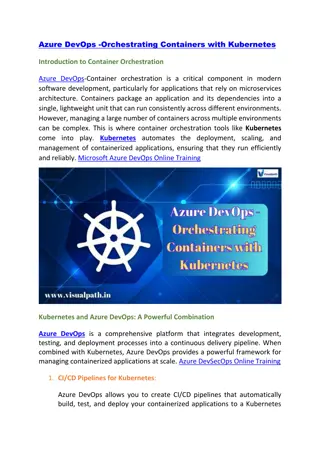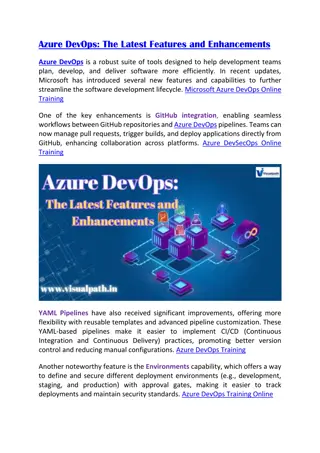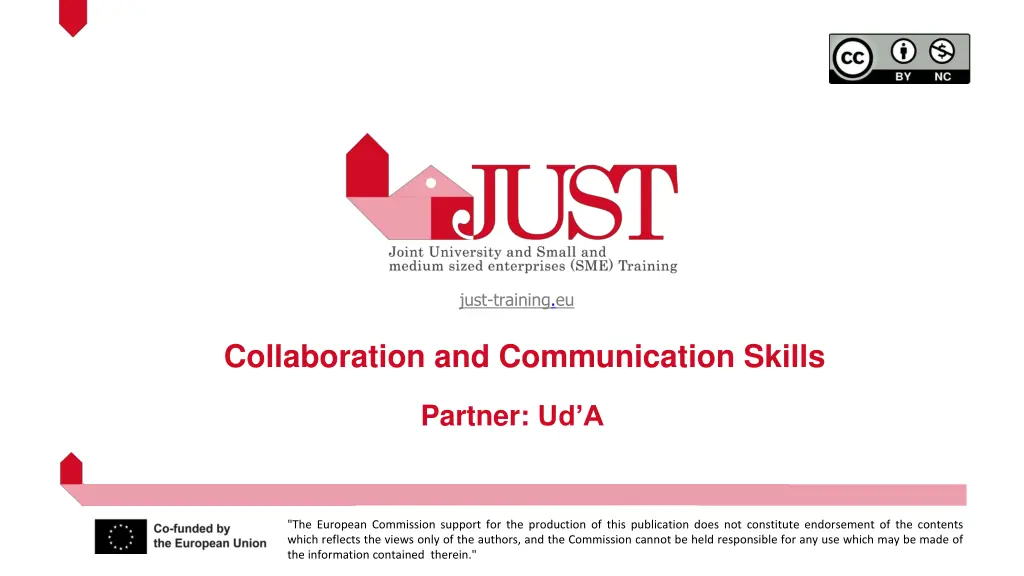
Enhancing Collaboration and Communication Skills for Effective Teamwork
Improve your collaboration and communication skills to work effectively in teams, understand team dynamics, resolve conflicts, and create a positive work environment. Learn essential skills for better team performance and quality of life. Discover the key principles and exercises to enhance your communication and collaboration abilities.
Download Presentation

Please find below an Image/Link to download the presentation.
The content on the website is provided AS IS for your information and personal use only. It may not be sold, licensed, or shared on other websites without obtaining consent from the author. If you encounter any issues during the download, it is possible that the publisher has removed the file from their server.
You are allowed to download the files provided on this website for personal or commercial use, subject to the condition that they are used lawfully. All files are the property of their respective owners.
The content on the website is provided AS IS for your information and personal use only. It may not be sold, licensed, or shared on other websites without obtaining consent from the author.
E N D
Presentation Transcript
just-training.eu Collaboration and Communication Skills Partner: Ud A "The European Commission support for the production of this publication does not constitute endorsement of the contents which reflects the views only of the authors, and the Commission cannot be held responsible for any use which may be made of the information contained therein."
Learning outcomes At the end of this module, you will: Better understand your teammates and team dynamics Better understand your teammates and team dynamics Know how to face up and overcome a conflict when it arises Know how to face up and overcome a conflict when it arises Understand how to work in a group by creating good Understand how to work in a group by creating good collaboration and communication collaboration and communication "The European Commission support for the production of this publication does not constitute endorsement of the contents which reflects the views only of the authors, and the Commission cannot be held responsible for any use which may be made of the information contained therein."
Index Communication and collaboration skills Communication and collaboration skills Collaboration skills Communication skills How to make yourself understood How to make yourself understood The Minto Pyramidal Principle: how to be impactful in business communication Structuring the content of your message Implementing Collaboration and Communication skills Implementing Collaboration and Communication skills Exercise to improve collaboration and communication "The European Commission support for the production of this publication does not constitute endorsement of the contents which reflects the views only of the authors, and the Commission cannot be held responsible for any use which may be made of the information contained therein."
1. Communication and Collaboration skills Two are strongly related Is about working together toward a common goal with others Are essential in team work and multiple work environments, across disciplines and fields Promote trust, satisfaction and commitment in the work environment (Sousa- Poza & Sousa-Poza, 2000). These, in turn, are predictors of a better quality of life, in general (Kun & Gadanecz, 2022) Individual variables as personality traits can have an impact in this regard, but is something that can be learned as well "The European Commission support for the production of this publication does not constitute endorsement of the contents which reflects the views only of the authors, and the Commission cannot be held responsible for any use which may be made of the information contained therein."
1.1 Collaboration Skills Persuasion: changing or influencing the behaviours, beliefs or attitudes of someone or a group towards another idea, person or event. Compromise: making a concession or giving something up in order to reach a happy medium. It can be very easy for some people, while others struggle in this regard. Brainstorming: it is a specific tool of communication to arrange and attract your team to meet and share their ideas Diplomacy: someone who can get their message across and convince people to change without damaging the relationship Flexibility: effectively adjust to short-term change to successfully deal with unexpected problems or tasks. To adjust quickly and calmly is key for the flexibility concept "The European Commission support for the production of this publication does not constitute endorsement of the contents which reflects the views only of the authors, and the Commission cannot be held responsible for any use which may be made of the information contained therein."
1.1 Collaboration Skills Positivity: it generates health, psychical, social and psychological. It is made of positive emotions and is about mutual understanding. It is satisfying for all the parties involved. Long-term thinking: it is about being comfortable in envisioning new directions and consciously working towards the future. Reliability: present truthful and reliable information. Debate and mediation in the workplace: to resolve workplace conflicts or disputes. Respect: to be honest, open and polite, practice kindness and avoid negativity. Accountability: accepting responsibility for the outcome of own choices, including the successes and the failures. Delegation: delivering the task to your team but also monitoring the progress. Trust: a critical element for leaders and non-leaders. It builds loyalty and increases credibility. "The European Commission support for the production of this publication does not constitute endorsement of the contents which reflects the views only of the authors, and the Commission cannot be held responsible for any use which may be made of the information contained therein."
1.2 Communication Skills Social Communication & Personal Space Personal space is the dynamic distance and orientation component of interpersonal relations (Gifford, 2007) Many personal and situational influences interact with preferences for particular interpersonal distances. For example, males have larger personal spaces Attraction and cooperation generally lead to smaller interpersonal distance, whereas less positive contexts, such as stigma and unequal status, lead to larger distances. When the physical setting is less spacious, larger interpersonal distances are selected Cultural differences in interpersonal distance exist (e.g., Costa, 2010), but other factors often alter cultural preferences "The European Commission support for the production of this publication does not constitute endorsement of the contents which reflects the views only of the authors, and the Commission cannot be held responsible for any use which may be made of the information contained therein."
1.2 Communication Skills Pragmatics of Human Communication Properties of communication that are fundamental interpersonal implications (cf. Watzlawick et al. 2011): THE IMPOSSIBILITY OF NOT COMMUNICATING THE CONTENT AND RELATIONSHIP LEVELS OF COMMUNICATION THE PUNCTUATION OF THE SEQUENCE OF EVENTS SYMMETRICAL AND COMPLEMENTARY INTERACTION "The European Commission support for the production of this publication does not constitute endorsement of the contents which reflects the views only of the authors, and the Commission cannot be held responsible for any use which may be made of the information contained therein."
1.2 Communication Skills One cannot not communicate Every behaviour is a form of communication! Because behaviour does not have a counterpart (there is no anti-behaviour), it is impossible not to communicate Even if communication is being avoided (such as the unconscious use of non-verbal or symptom strategy), that is a form of communication. "Symptom strategy" is ascribing our silence to something beyond our control and makes no communication impossible Examples of symptom strategies are sleepiness, headaches, and drunkenness. Even facial expressions, digital communication, and being silent can be analysed as communication by a receiver "The European Commission support for the production of this publication does not constitute endorsement of the contents which reflects the views only of the authors, and the Commission cannot be held responsible for any use which may be made of the information contained therein."
1.2 Communication Skills Every Communication has a content and relationship aspect All communication includes, apart from the plain meaning of words, more information. This information is based on how the speaker wants to be understood and how he himself sees his relation to the receiver of information. Relationship is the command part of the message or how it is non-verbally said. Content is the report or what is said verbally. Being able to interpret both of these aspects is essential in understanding something that a communicator said. The relational aspect of interaction is known as metacommunication. Metacommunication is communication about communication. Relationship messages are always the most important element in communication. "The European Commission support for the production of this publication does not constitute endorsement of the contents which reflects the views only of the authors, and the Commission cannot be held responsible for any use which may be made of the information contained therein."
1.2 Communication Skills The relationship is dependent on the punctuation of the partners communication procedures: Both the sender and the receiver of information structure the communication flow differently and therefore interpret their own behaviour during communicating as merely a reaction on the other s behaviour (i.e., every partner thinks the other one is the cause of a specific behaviour). To punctuate a communication means to interpret an ongoing sequence of events by labelling one event as the cause and the following event as the response. In a situation with communication, if one thing happens, something else always happens. 1 3 husband So, in this case, a conflict may arise on what is believed to be the cause and what is considered the effect of the mutual behaviours, when instead the interaction is circular! Therefore, none of the versions of the partners can be considered correct (the husband neglects his wife because she has no self-care and the wife has no self-care because the husband neglects her)! wife 2 "The European Commission support for the production of this publication does not constitute endorsement of the contents which reflects the views only of the authors, and the Commission cannot be held responsible for any use which may be made of the information contained therein."
1.2 Communication Skills Inter-human communication procedures are either symmetric or complementary This axiom focuses on metacommunication with two main components called symmetrical and complementary interchange. Symmetrical interchange is an interaction based on equal power between communicators. Complementary interchange is an interaction based on differences in power. Within these two interchanges there are three different ways they can be used: one-up one-down one-across With one-up communication, one communicator attempts to gain control of the exchange by dominating the overall communication. A one-down communication has the opposite effect. A communicator attempts to yield control of an interaction or submit to someone. The final message is a one-across communication. This communication moves to neutralise a situation. This is also called transitory if only one communicator is attempting this style. When two communicators use the same style of one-up, one-down, or one-across, it is symmetrical. If they are opposing one another, it is complementary. This axiom allows us to understand how an interaction can be perceived by the styles a communicator is using. "The European Commission support for the production of this publication does not constitute endorsement of the contents which reflects the views only of the authors, and the Commission cannot be held responsible for any use which may be made of the information contained therein."
1.2 Communication Skills Non-verbal Communication (NVC) Bodily communication, other than words and language Categorisation of NVC (i.e., Paralanguage). Paralanguage consists of the non-verbal elements that accompany speech. It includes: The way we speak (also known as prosodic features) Volume, pitch, intonation, speed of delivery, articulation, rhythm The sounds we make other than the language Laughter, crying, yawning, sighing, screeching, coughing Filled pauses such as Ummm , well Unfilled pauses Physical Appearance (You only have to think of the huge industries associated with the above examples to recognise the cultural significance of physical appearance). It is the body s capacity to communicate aspects of an individual s identity which makes us so aware of our physical appearance "The European Commission support for the production of this publication does not constitute endorsement of the contents which reflects the views only of the authors, and the Commission cannot be held responsible for any use which may be made of the information contained therein."
1.2 Communication Skills Functions of NVC NVC has a particularly important role in establishing and maintaining relationships, otherwise known as an affective function. We rely more heavily on NVC in this area of personal communication Looks, glances, and changes in orientation allow others to know what sort of relationship we want to have We use NVC to establish a mutually acceptable level of intimacy). Replacing and regulating language (i.e., the role of NVC in inflecting the meaning of a sentence can be explored by performing the following sentence in different ways). "The European Commission support for the production of this publication does not constitute endorsement of the contents which reflects the views only of the authors, and the Commission cannot be held responsible for any use which may be made of the information contained therein."
1.2 Communication Skills Communicative Competences A competent communicator will: Recognise and use different verbal and non-verbal styles as they are suited to different social situations Recognise the relation between verbal and non-verbal elements in communication Compensate for possible misinterpretations in communication with others "The European Commission support for the production of this publication does not constitute endorsement of the contents which reflects the views only of the authors, and the Commission cannot be held responsible for any use which may be made of the information contained therein."
2. How to make yourself understood The Minto Pyramidal Principle: how to be impactful in business communication Communication is a serious thing: the way to convey your ideas in any professional setting might make the difference as much as your technical expertise and your knowledge of the field. Great Ideas seem indeed great ideas due to the way they are portrayed. In the context of these next few slides, you will be introduced to a few tips and tricks that will help you in mastering the art of communication and how professionals structure and convey their messages in an impactful and effective way. We will talk about the Minto Pyramidal Principle, formally pioneered by Barbara Minto Harvard Business graduate and McKinsey Consultant from 1963 to 1973 "The European Commission support for the production of this publication does not constitute endorsement of the contents which reflects the views only of the authors, and the Commission cannot be held responsible for any use which may be made of the information contained therein."
2. How to make yourself understood The Minto Pyramidal Principle: a matter of efficiency and effectiveness It is highly possible that not long after the very beginning of your professional journey, you will find yourself pitching a crisp idea to a senior of yours, a potential partner or a potential client. By default, assume that your interlocutor is very much busy and might not be able (or willing) to give you more than a few minutes of his / her precious time. Your best interest is to maximise the quality of the time you have available with your audience without sacrificing any of the details leading to your conclusions. The rules are simple: "The European Commission support for the production of this publication does not constitute endorsement of the contents which reflects the views only of the authors, and the Commission cannot be held responsible for any use which may be made of the information contained therein."
2. How to make yourself understood The Minto Pyramidal Principle: a matter of efficiency and effectiveness 1 2 3 Structure the supporting ideas Group your supporting arguments Start with the answer(s) first Again: preferably, no more that three ideas per each argument. ideally no more than three, unless strictly necessary to include more. Don t waste time with details. Go straight to the point and make sure that your takeaways are clear from the very beginning. Make sure to valid them through highly reliable and quantitative-driven data. Remember that you want to be as concise and comprehensive as possible at any given time. You wish for your arguments to be both robust and reliable Make a statement and move from there "The European Commission support for the production of this publication does not constitute endorsement of the contents which reflects the views only of the authors, and the Commission cannot be held responsible for any use which may be made of the information contained therein."
2. How to make yourself understood The Minto Pyramidal Principle: a visual representation All in all, the visual breakdown of your intervention should look like something as follows: Additional tips for the application of Minto s Principle: Main recommendation / goal / idea TIME ORDER: If some cause-effect relationship exists between your arguments/support evidence, make sure to highlight the underlying sequence of events Argument 1 Argument 2 Argument 3 Support 1 Support 1 Support 1 STRUCTURAL ORDER: Break down your discussion into singular thoughts. The more granular you will be, the easier it is for your interlocutor to understand your thoughts process Support 2 Support 2 Support 2 DEGREE ORDER: Make sure to disclose your thoughts in order of importance Support 3 Support 3 Support 3 "The European Commission support for the production of this publication does not constitute endorsement of the contents which reflects the views only of the authors, and the Commission cannot be held responsible for any use which may be made of the information contained therein."
2. How to make yourself understood The Minto Pyramid combined with the MECE Principle Main hypothesis is true if the following is satisfied MECE is a systemic problem-solving framework used by top- notch consulting companies to break down a very complex and sophisticated problem into its essentials. Condition 1 Condition 2 Condition 3 Once the problem (the business challenge) is de-structured in its basic components, it becomes much easier to evaluate and assess suitable options that might apply to that given issue. The acronym stands for: Sub- Sub- Sub- Condition 1 Condition 1 Condition 1 Sub- Sub- Sub- Mutually Exclusive Collectively Exhaustive Condition 2 Condition 2 Condition 2 Sub- Sub- Sub- Condition 3 Condition 3 Condition 3 "The European Commission support for the production of this publication does not constitute endorsement of the contents which reflects the views only of the authors, and the Commission cannot be held responsible for any use which may be made of the information contained therein."
2. How to make yourself understood Structuring the content of your message Impactful and effective communication starts from the very way you design and structure your verbal and written communication. Mastering the MECE and Minto s principles is just the cherry on the cake of business communication, indeed, there are many other easy tricks that you can rely on to be more effective, clear and lean in your day-by-day communication with colleagues, clients and supervisors. These types of recommendations can be divided into two categories: CONTENT Meaning: the concrete information shared by you how relevant they seem the clarity of the key message(s) FORMATTING Meaning: the clarity of the information how free they are from margins of misinterpretations how self-explanatory is the information within and the docs in support "The European Commission support for the production of this publication does not constitute endorsement of the contents which reflects the views only of the authors, and the Commission cannot be held responsible for any use which may be made of the information contained therein."
2. How to make yourself understood Punctual, precise and clear information CONTENT FORMATTING 1. Every communication should start with a subject. Make sure that your interlocutor is always informed on what you are talking about (i.e., always update the object of your emails) 2. Disclose every piece of information that might help your interlocutor in better understating the context of a given circumstance 3. Be always very clear and precise when setting up deadlines and people assigned to a specific task 4. Do not leave margins for free interpretations 5. Streamline your messages from redundant details 1. Use simple and accessible language, even more so when dealing with technical issues 2. Prepare lists/bullet points to make more evident the many different topics addressed by your arguments 3. Speak slowly and take frequent but brief pauses: it will help you in assessing the impression that you are making on your audience 4. When approaching your conclusions, make sure to make a concise and comprehensive recap 5. Come up with an agenda: be sure to be relatable, on-point and reliable "The European Commission support for the production of this publication does not constitute endorsement of the contents which reflects the views only of the authors, and the Commission cannot be held responsible for any use which may be made of the information contained therein."
3. Implementing Collaboration and Communication Skills Exercise to improve collaboration and communication among people Who Am I? Who Am I? Let s pair up, people, please, and describe one part of your own to the other (just a brief presentation of something relevant for you to answer the question who you are ). The other in front of you should listen to your description and then do the same. (time 5 minutes). Afterwards, the conductor will invite you to introduce yourself by pretending to be the other, speaking in the first person. "The European Commission support for the production of this publication does not constitute endorsement of the contents which reflects the views only of the authors, and the Commission cannot be held responsible for any use which may be made of the information contained therein."
Summing up Communication and its management has many forms and modalities The Minto principle for writing and thinking MECE framework for systemic problem solving Non-versal communication is an essential component of communication. Promoting trust, satisfaction, collaboration, and commitment in the work environment are protective factors toward a better quality of life. Belonging to a group means not only knowing how to relate to others in a strategic way on a communicative level but also knowing how to listen to the others and their needs. "The European Commission support for the production of this publication does not constitute endorsement of the contents which reflects the views only of the authors, and the Commission cannot be held responsible for any use which may be made of the information contained therein."
just-training.eu Thank you! "The European Commission support for the production of this publication does not constitute endorsement of the contents which reflects the views only of the authors, and the Commission cannot be held responsible for any use which may be made of the information contained therein."



